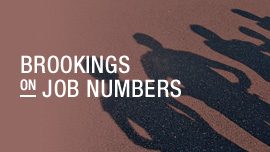Private employers added 216,000 to their payrolls in May, the 51st consecutive month in which private payrolls increased. According to the latest BLS jobs report, government employment was essentially unchanged last month, continuing a pattern in which all the job market recovery has been concentrated in the private sector. Private payroll gains were large enough to boost total payrolls over the previous peak level, which was attained at the start of the Great Recession. It has taken 6 years and 4 months to surpass the previous peak of payrolls attained in January 2008.
Since World War II the nation has never seen such a long period between an employment peak in one economic expansion and the recovery of that payroll level in a later expansion. The previous record was 48 months, the span of time following the peak of employment in early 2001 and February 2005, when U.S. payrolls finally topped their level at the end of the 1991-2001 expansion. Since private payrolls began to rise in March 2010, private employers have added 184,000 positions a month. The pace of gain over the last 3 years has been remarkably stable, with private employers increasing their payrolls 197,000 a month. In the past 12 months they also added 197,000 jobs a month.
If the nation were close to full employment, private and government employers would need to create between 70,000 and 90,000 jobs a month in order to keep the unemployment rate relatively stable. Over the past three years payroll gains have exceeded that threshold by a comfortable margin. As a result the employment-to-population ratio has edged up slowly and the unemployment rate has declined.
There is another reason the unemployment rate has dropped 3.7 percentage points since reaching a peak in October 2010, however. Many Americans under 55 became discouraged by their prospects of finding a job and have stopped looking for work or have delayed their entry or re-entry into the workforce. Since the end of the last economic expansion in 2007, the labor force participation rate has fallen 3.2 percentage points. Almost half the decline occurred in the past 36 months, even though private-sector and total payrolls have been rising steadily.
Some of the participation-rate decline can be traced to population aging, which is reducing the fraction of adults expected to be at work or looking for a job. Much of the decline, however, is due to the fact that job seekers continue to outnumber net new job openings by a sizeable ratio. The BLS reports that the ratio of job seekers to job vacancies is now about 2.6, far below the peak of this ratio at the end of the Great Recession, but about 75% above the ratio in 2007, at the end of the last economic expansion. If we added in the potential job seekers who would enter the workforce if the job market were closer to full employment, the ratio of actual and potential job seekers to job opening is of course much higher than 2.6.
Job creation has been remarkably steady over the past three years, and this pattern continued in May 2014. But new job creation has been painfully slow in relation to the enormous number unemployed and labor force dropouts created by the Great Recession.
The Brookings Institution is committed to quality, independence, and impact.
We are supported by a diverse array of funders. In line with our values and policies, each Brookings publication represents the sole views of its author(s).



Commentary
Slow but Steady: U.S. Job Market Continues to Improve
June 6, 2014